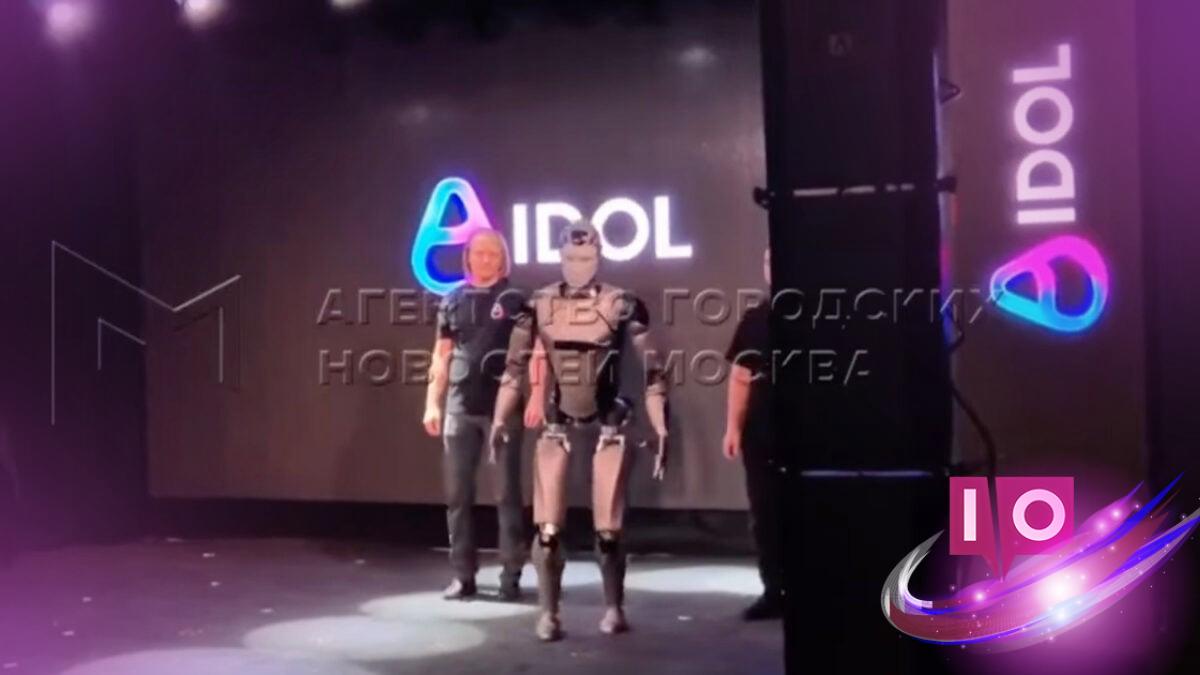In today’s fast-paced tech landscape, humanoid robots have become the center of attention. Companies worldwide are racing to develop their own bipedal models, but many are struggling to deliver functional prototypes. A striking example is the recent unveiling of the AIdol robot by a Russian company called Idol, which faced a significant setback during a live demonstration—literally face-planting in front of an audience.
This prototype was introduced at a forum organized by the New Technology Coalition, an association focused on humanoid robot development. Marketed as “Russia’s first anthropomorphic robot,” AIdol’s debut didn’t go as planned; it lost balance, fell, and ended up damaged on stage. Incidentally, the music playing when AIdol took its tumble was from the Rocky soundtrack, adding a layer of ironic humor to the unfortunate moment.
A video capturing this incident circulated widely, highlighting the juxtaposition of expectations versus reality in the robotics field. Vladimir Vitukhin, CEO of Idol, addressed the mishap by stating, “This is precisely the kind of real-time learning where a successful mistake turns into knowledge, and an unsuccessful one turns into experience. I hope this mistake turns into experience.” His optimistic approach may inspire innovation, even in failure.
Why Do Many Humanoid Robots Struggle?
The AIdol incident is not an isolated case. Many robots presented in public recently face similar challenges. Remember when Elon Musk showcased the original prototype of the “Tesla bot,” which turned out to be just a person in a suit? Although Musk has since shared more impressive updates on the much-touted “Optimus,” the initial embarrassment lingers.
Meanwhile, companies like Boston Dynamics are delivering noteworthy results. Their four-legged robot, known as “Spot,” and the bipedal robot “Atlas,” funded by DARPA, show far greater capability and stability compared to many of their competitors. This raises a thought-provoking question: Is society prepared for the rapid advancements in robotics, and what implications do they carry for everyday life?
What Are the Real Developments in Humanoid Robotics?
Several robotics companies are pushing the envelope by creating groundbreaking bots. For instance, AIdol may have stumbled, but other firms are achieving more remarkable feats. Boston Dynamics’ Atlas, which has demonstrated impressive agility, could change how we view the potential of humanoid machines in the near future. What does this imply for industries concerning automation and efficiency?
How Do These Robots Learn and Adapt?
Humanoid robots generally incorporate various learning algorithms to improve over time. While AIdol’s unfortunate fall was a real-time learning experience for its developers, it underscores a vital question: Can these robots effectively adapt to their environments and resolve issues autonomously? Effective machine learning integrations are crucial for ensuring that robots can navigate the complexities of the real world.
Many prospective advancements will likely depend on improving stability and coordination in these machines. As research continues, everyday consumer experiences with robots will likely also evolve, leading to a more seamless integration of robotics into daily life.
Why is there so much excitement about humanoid robots? The urge to create machines that can assist in various tasks—ranging from companionship to industrial applications—creates a high demand for reliable robotic companions. This includes innovative solutions aimed at enhancing productivity, safety, and even personal life.
Are humanoid robots ready for practical use? While many prototypes display promising traits, the early stage of development means we may need some patience before seeing them seamlessly integrated into our lives. Continuous technological advancements will play a crucial role in defining their path.
What Future Developments Can We Expect?
The future of humanoid robotics looks promising but needs careful navigation through challenges. With companies like Idol and Boston Dynamics at the forefront, we can expect ongoing developments to refine functionality and user experience. As these technologies mature, they may ultimately reshape not just industries but also our daily interactions.
As we look towards the horizon of robotic innovation, consider exploring related topics to deepen your understanding and stay updated on these exciting advancements. For comprehensive insights into tech and innovation, check out Moyens I/O.
